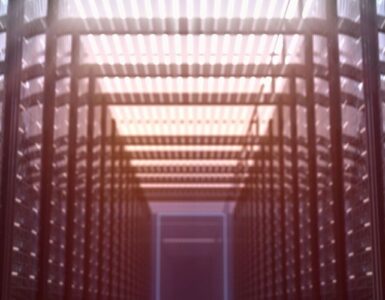Over the last few years, organizations have developed a level of ambiguity about what an ideal SAP Analytics landscape should be. Options were confusing and many solutions were still nascent. We’ve worked with some companies who have elected to modernize with non-SAP analytic environments, driving new capabilities and transformation at the expense of future integration with SAP S4/HANA and the extended SAP solutions (Field Glass, SuccessFactors, Ariba, et al.).
Today, we are seeing an uptick in the number of companies upgrading their SAP Analytics architectures. Some of these companies are approaching upgrades due to end of software maintenance schedules. Others have realized that their S/4HANA upgrade requires investment in an analytics program to align with a clean core strategy. The analytics market is undergoing disruption that enables features beyond traditional frontend and backend environments that are common today. A more inclusive assessment of current state capabilities is recommended.
Some organizations have modernized, moving toward data lake technologies or innovated with non-SAP analytic tools and systems. These companies encounter more challenging development cycles (recreating business context) with SAP data. They may also discover that additional efforts are needed to integrate data, including using several non-SAP approved methods such as ODP RFC extraction, which occasionally will arise as an audit finding. We refer to these landscapes as a best-of-breed architecture, indicating both SAP and non-SAP products exist within the landscape. Best-of-breed does not necessarily mean they have the best product, but it does mean that integration and business context (business process interpretation) will require more effort than those with full-stack SAP technology landscapes or a best-in-suite strategy.
Growing pains have largely subsided across SAP’s entire analytics and greater business tech platform (BTP) technology stack which can simplify the processing, storage and integration of SAP data. Many organizations are already in a productive steady-run state with SAP BW/4, HANA Cloud, SAP Datasphere, Integration Suite, BusinessObjects, Data Services Fiori, SAP Analytics Cloud and others.
What else should be assessed in these upgrades?
While end-of-life maintenance may be a catalyst, this should not be viewed as a single system upgrade. Reflect upon the current state of your capabilities in business intelligence, analytics, data science, middleware/integration, internal custom application development and robotic process automation (RPA). Bringing existing systems into support compliance does not always provide new capabilities and the ongoing cost of upgrading might not add value. This is especially true given the number of SaaS platforms now available. SaaS platforms can significantly reduce burden and cost by removing the need to host, support and upgrade BI platforms and applications while at the same time, accommodate modern capabilities. Perhaps this is a good time to consider re-platforming your landscape. In general, we ask our clients to consider the following when faced with upgrading vs re-platforming:
- What are the total costs of ownership?
- Have we achieved developer and user proficiency?
- What is the current system’s stability and performance?
- How can we leverage our existing technical investment in managed data pipelines and analytic models?
- What are our IT and business user pain points, and can they be addressed with a re-platforming?
- Can we adequately support data governance and data ownership?
- Can we support data science, advanced analytics, machine learning and AI with our current architecture? Can we easily automate and integrate into production scenarios?
- Are we able to support the demand from business users with new capabilities?
- Is there enough agility in the architecture to meet the demands of new content for business users?
- What is the speed at which data can be processed to either end-user dashboards?
- Can an analytic event trigger an automation workflow?
- Are we happy with the self-service capabilities, ability to plan/forecast, and dashboard visualizations?
- Are end-users circumventing the analytic applications due to data availability?
In general, these questions are designed to help our clients determine where their capabilities are across multiple IT disciplines that are becoming increasingly integrated.
Additional S/4HANA upgrade considerations
The S/4HANA Upgrade carries additional considerations, including:
- S4/HANA data structures and processes are changing, forcing the reworking of their legacy data pipelines.
- S4/HANA offers many new capabilities. Embedded analytics, core data services, Fiori which can adjust exiting analytics strategies in general.
- S4/HANA customers should adopt the “clean core” and “extend the core” approaches.
General recommendations
Consider a new organizational model: the IT disciplines listed above are increasingly commingling into end-to-end solutions within SAP’s Business Technology Platform, Microsoft Power Platform and other hyperscaler frameworks. Consequently, we are seeing more leading organizations adopting new development team compositions than the traditional analytics frontend, backend, data governance, and ongoing support/monitoring’ functions.
New capabilities to explore: The solutions these newly enabled teams can provide to business partners produce better outcomes compared to traditional descriptive dashboards or reports. Envision, if you will, exception-based analytics that accept user input to enrich other dashboards with context or initiating an RPA workflow as opposed to manually performing routine actions based upon analysis.
Best-of-suite: The key to achieving these capabilities without devoting significant resources solely to integration, monitoring and steady-state governance is to adhere to an SAP ‘best-in-suite’ architecture. This is a great approach for most organizations with less than $2 billion in annual revenue.
Intentional best-of-breed/data fabric (large organizations) or for those having success outside of SAP programs: Organizations switching to intentional best-of-breed architecture with high-performing programs are having great success with non-SAP products such as Snowflake or Microsoft Azure and PowerBI. We see organizations succeed with SAP Datasphere and SAP Build in these scenarios as they complement these solutions and reduce the integration and context pain points. For example, Datasphere enables real-time capabilities via the CDS view concept from S4 and accelerates SAP integration into Snowflake (or other data environments) using pre-built data models and replication flows, returning the business context and accelerating development and facilitating integration. The largest organizations can achieve data fabric and data mesh at scale using this approach, improving their existing program. Likewise, SAP Build can provide RPA and automation programs with new capabilities and accelerators through process integration, accelerating development on the thriving non-SAP platform.
Step-by-step: It’s important to understand that it is not necessary to go all-in and adopt all the technologies and prerequisite applications listed above. Instead, add to your architecture piece by piece. Frequently, organizations find they can reduce costs in specific areas; the most common cost savings we routinely encounter is a shift to SAP’s Integration Suite from both point-to-point and legacy middleware solutions.
Jonathan Haun, Senior Director, contributed to this post.
To dive deeper into upgrade specifics, including any prerequisite content remediation, server and cloud considerations, and migration accelerators such as the BW Bridge, or to learn more about our SAP solutions, contact us.




Recent Comments